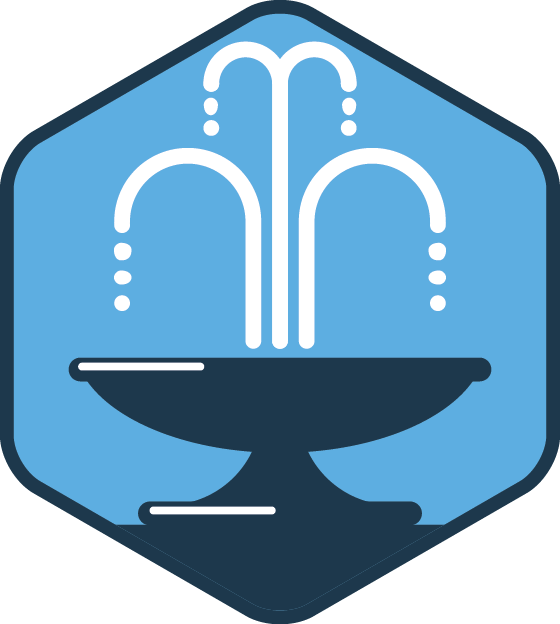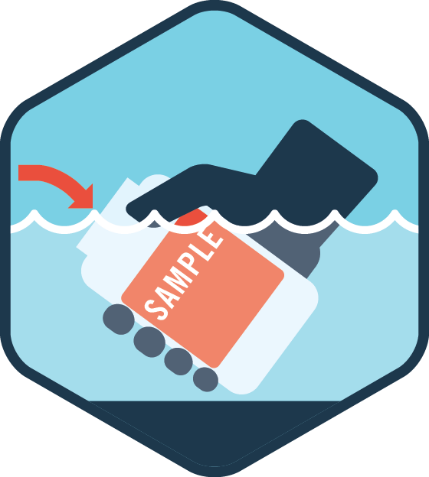Controlling Legionella in Decorative Fountains
Key Points
- All decorative fountains produce aerosols.
- Do not place decorative fountains in areas intended for use by persons at increased risk of Legionnaires’ disease, such as healthcare facilities.
- Cleaning and disinfection are a regular part of decorative fountain operation and maintenance.
Purpose
Use this document to:
- Help evaluate hazardous conditions associated with decorative or ornamental fountains (“decorative fountains”)
- Implement Legionella control measures for decorative fountains per ASHRAE Guideline 12-2020
- Complement existing resources for water management programs
- Support environmental assessments conducted during public health investigations
Sediment and biofilm, temperature, water age, and disinfectant residual are the key factors that affect Legionella growth.
Design
Understanding the decorative fountain design components are critical for Legionella control. Consider how each of the following impacts the factors for Legionella growth: size, pumps, lighting, filtration, water treatment systems, and features (e.g., cascades, sprays, water walls). Decorative fountains should be supplied with a cold potable water make-up source at temperatures below the favorable range for Legionella (77–113°F, 25–45°C).
Operation, Maintenance, and Control Limits
All decorative fountains produce aerosols. Safe operation and regular decorative fountain maintenance protect building owners, employees, and visitors from exposure to Legionella. The frequency of these activities depends on the environmental conditions present in the area where the decorative fountain is located and its design. Use a water management program to establish, track, and improve operation and maintenance activities. Operate and maintain decorative fountains of all types and sizes with the following guidelines in mind:
- Follow manufacturer recommendations and any requirements of the authority having jurisdiction.
- Do not operate decorative fountains in areas intended for use by persons at increased risk of Legionnaires’ disease, such as healthcare facilities.
- Monitor critical water parameters, like temperature and disinfectant residual, at least weekly.
- Automate disinfectant feed and monitoring systems, if possible.
- Apply algaecide as needed.
- Avoid prolonged idle periods and run decorative fountains at least daily.
- Immediately clean and disinfect if cloudy water, visible debris, algae, biofilm, or foul odor are present.
- Consider testing for Legionella in accordance with the routine testing module of this toolkit.

Remediation
If an outbreak or illness is suspected, test in conjunction with public health in order to:
- Confirm the presence of Legionella before performing remediation.
- Confirm elimination of Legionella after remediation activities.
ASHRAE Guideline 12-2020 does not define remedial treatment procedures for decorative fountains. The following procedures are adapted from the ASHRAE Guideline 12-2020 heated whirlpool and spa/hot tub remedial treatment procedure.
If control measures are ineffective or if routine test results indicate poor Legionella control, and there are NO illnesses, then consider the following remediation steps:
- Remove the decorative fountain from service.
- Hyperchlorinate, maintaining 10 ppm free chlorine for one hour.
- Drain the water once shock disinfection is completed.
- Scrub all surfaces.
- Clean and service filters (if applicable).
- Refill with fresh potable water.
- Return the decorative fountain to the routine disinfectant residual level outlined in Table 1 before use.

If an associated outbreak or illness is suspected by the public health authority having jurisdiction (AHJ), do the following. Note: The public health AHJ determines whether there are associated illness(es) or an outbreak.
- Remove the decorative fountain from service.
- Drain the decorative fountain.
- Scrub all surfaces.
- Replace filters or filter media (if applicable).
- Repair parts as needed.
- Refill the decorative fountain.
- Hyperchlorinate, maintaining a minimum of 20 ppm free chlorine for 10 hours.
- Drain and rinse all components of the decorative fountain.
- Refill with fresh potable water.
- Return the decorative fountain to the routine disinfectant residual level outlined in Table 1 before use.
* Exposure to warm air, heat-generating submerged lights, or other factors that elevate water temperature into the favorable growth range (77–113°F, 25–45°C) will require additional mitigation strategies.
- Toolkit for Controlling Legionella in Common Sources of Exposure
- Toolkit: Developing a water management program to reduce Legionella growth and spread in buildings: A practical guide to implementing industry standards
- Legionella Environmental Assessment Form
- Prevent LD Training
- ASHRAE Guideline 12-2020